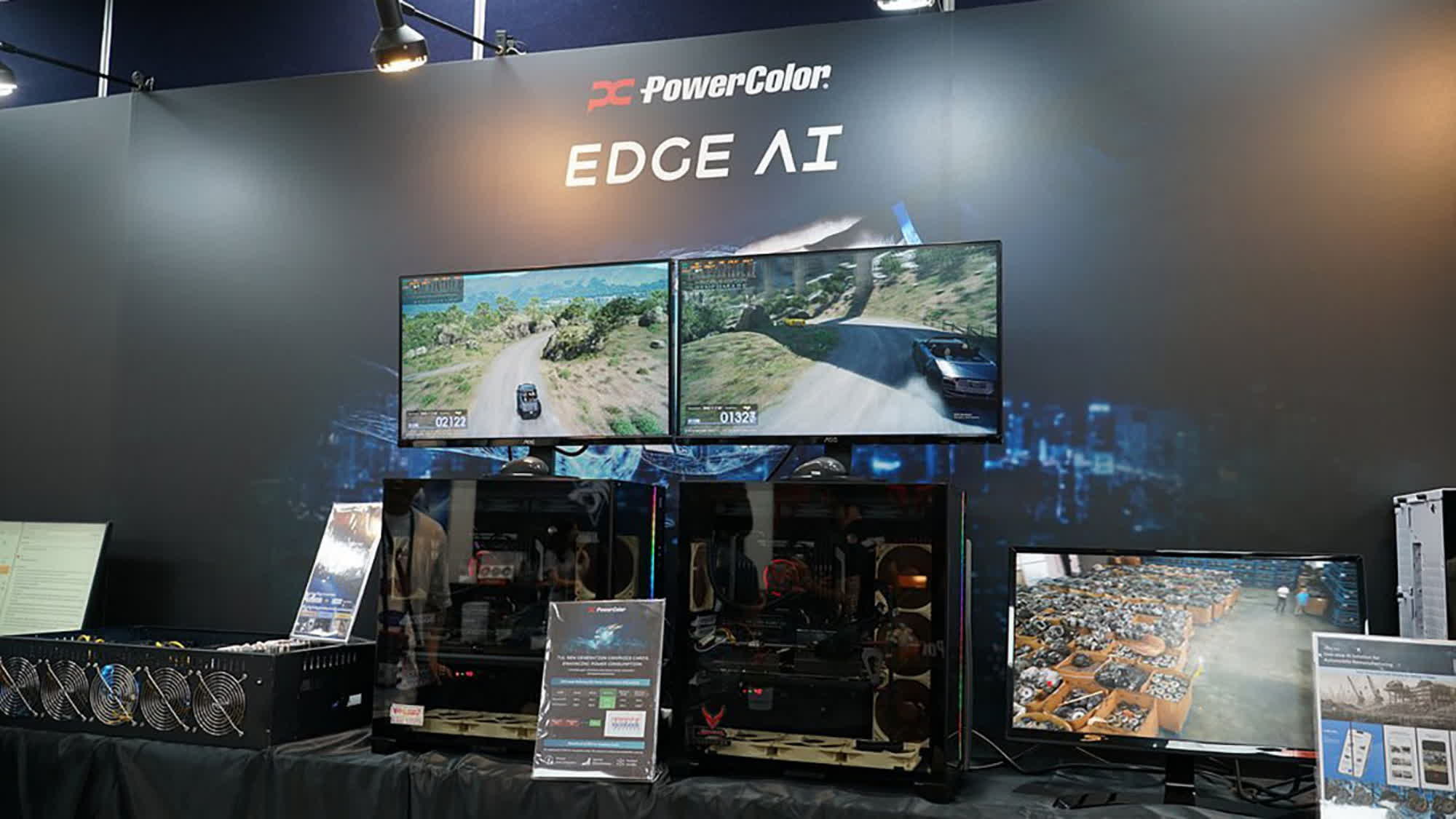AI Everywhere: Taiwanese manufacturer PowerColor has been making graphics cards and GPUs since the late 90s. The company's latest proposal relates to AI, of course, or rather how NPUs can be used to optimize GPU utilization in modern gaming applications.

During this year's Computex, PowerColor showed a new technology prototype that could theoretically bring NPUs and GPUs together for better performance and power efficiency. Edge AI, as the technology is known, uses the specialized silicon components hidden inside an NPU to optimize how a discrete GPU uses power to render complex 3D graphics on-screen. The results can be significant they claim.
For its Computex demonstration, PowerColor wired an external NPU to an AMD graphics card. PowerColor's Edge AI was programmed to manage power consumption of the GPU through the NPU, sort of an "Eco mode" which the company claims can bring wattage down and push frame rates up. According to data provided by graphics card maker, this NPU-based AI engine was able to reduce power consumption by 22 percent while gaming.
Edge AI was employed to manage GPU utilization in Cyberpunk 2077 and Final Fantasy XV, which were using 263W and 338W of power by default, respectively. The external NPU brought those numbers down to 205W and 262W, achieving better results than AMD's own Power Saving mode.
PowerColor integrated NPU to Radeon GPU. (Still developing)
– í¬ìÂÂí¬ì (@harukaze5719) June 7, 2024
Through AI, they claim power consumption deceased 22%. More saved than AMD Power Saving. pic.twitter.com/9I8iEikotD
PowerColor has provided no further details about how Edge AI performs its tricks, though it's likely using specially-trained machine learning algorithms on the NPU to manage a GPU's load, voltage, and temperature to improve energy efficiency. The company also claims that Edge AI can increase gaming performance, but the Computex demo showed a 9 percent drop in frame rates instead.
Neural processing units are coming to x86 and Arm PCs with the latest processors from Intel, AMD, and Qualcomm. The idea is that Edge AI could run its power optimization routines on these integrated NPUs, rather than using a convoluted external hardware setup as shown in the Computex demo.
PowerColor could even integrate Edge AI into its upcoming discrete GPUs, though this would likely add to the cost of the graphics card which wouldn't necessarily be something gamers are willing to pay for, unless results are really there. Despite being just a demo, the PowerColor tech does open the door to some potentially interesting ideas. GPU makers could take note and look into similar integrations in the not-so-distant future, turning NPUs embedded in the latest CPUs into something useful even on powerful x86 gaming systems.
PowerColor claims they can improve GPU performance by leveraging an external NPU